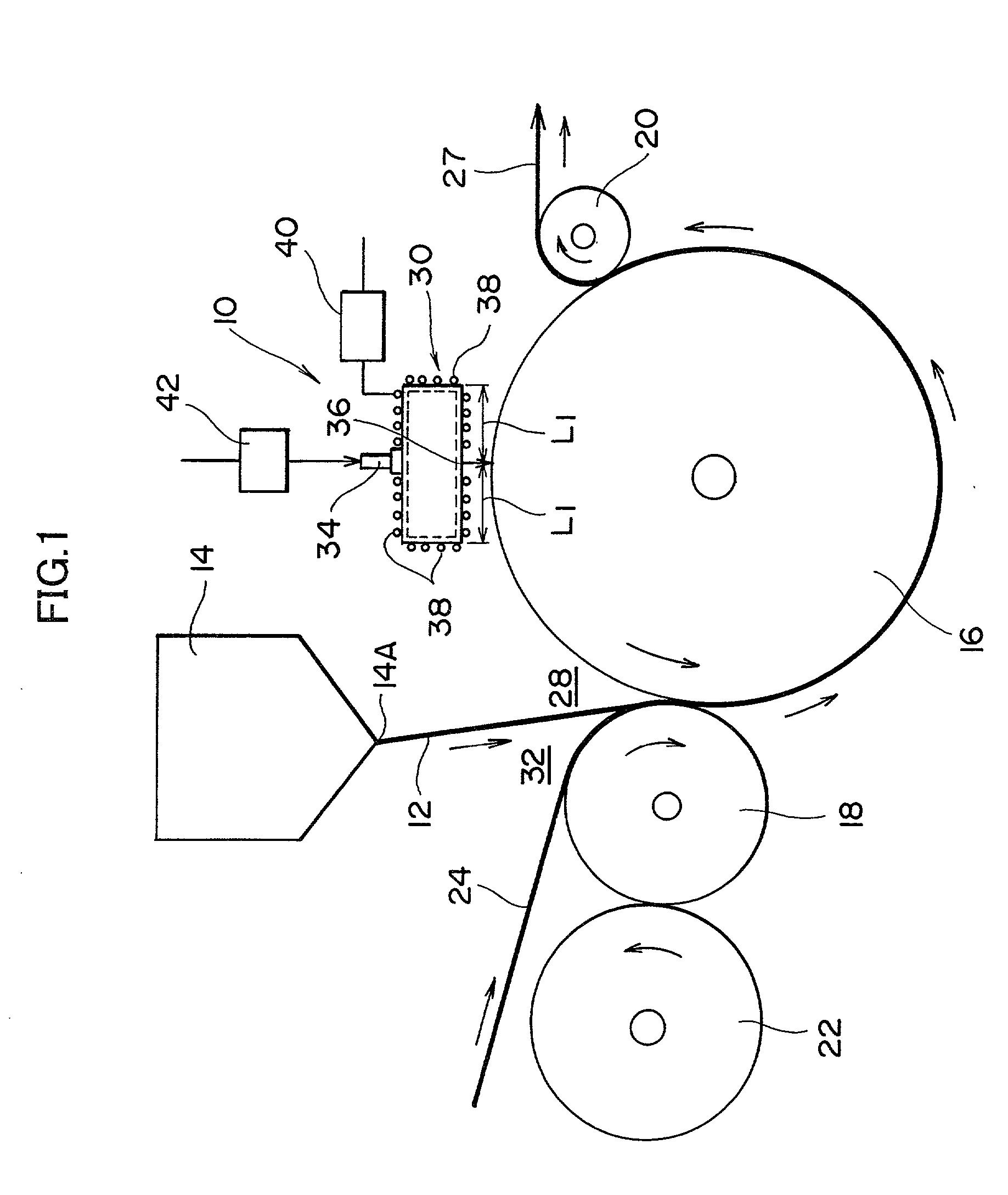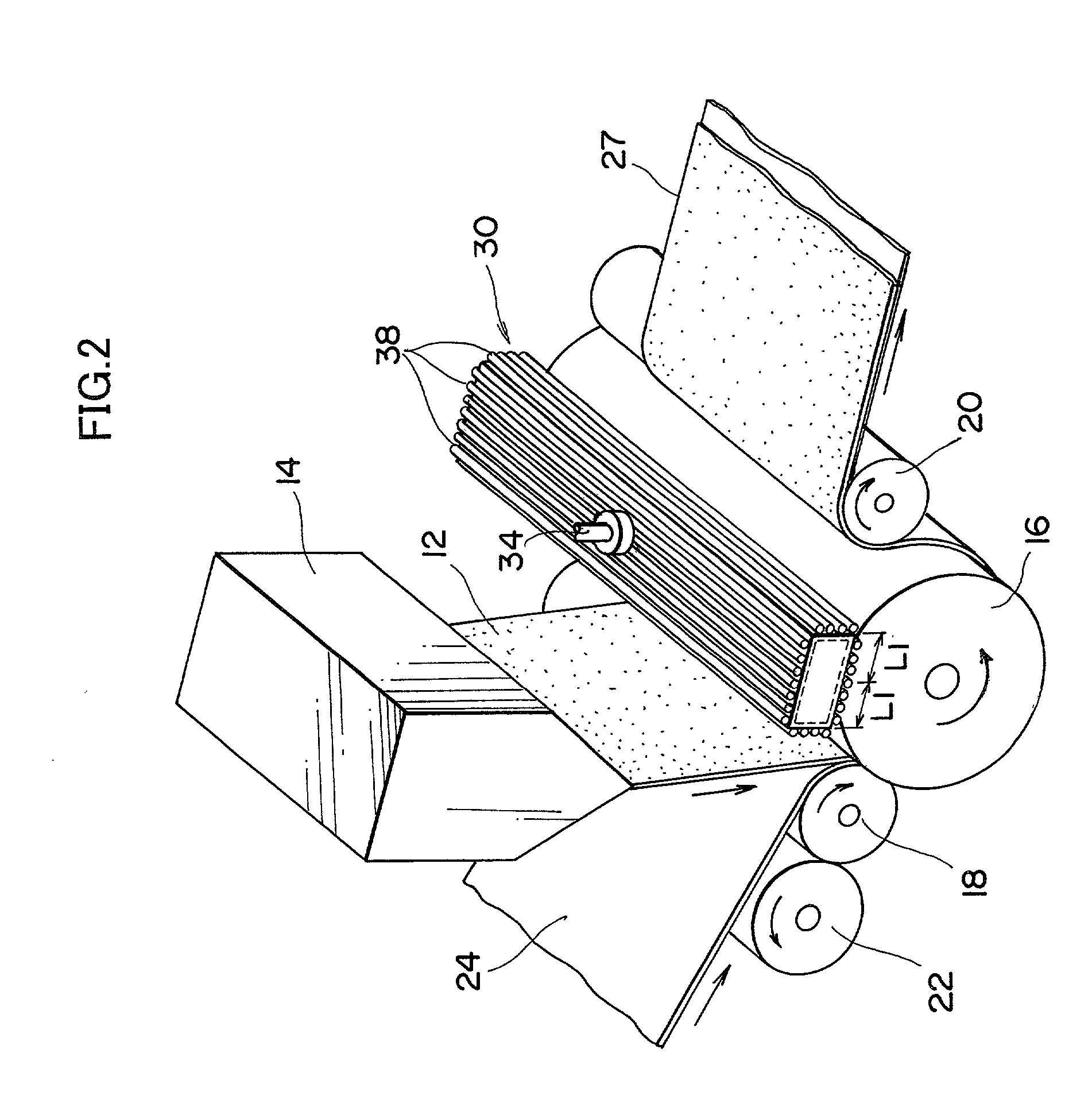Method and apparatus for producing laminates
a technology of apparatus and laminates, applied in the direction of layered products, layered products, chemical apparatus and processes, etc., can solve the problems of significant productivity drop, component volatilization, appearance but also quality damage,
- Summary
- Abstract
- Description
- Claims
- Application Information
AI Technical Summary
Benefits of technology
Problems solved by technology
Method used
Image
Examples
example 1
[0042] In Example 1, the same nozzle as that of Comparative Example 1 was placed at a distance of about 12.5 mm from the edge of the blowing face, and heaters as well as thermocouples were provided in a plurality of positions outside the blower, and the temperature was controlled so that the blower was kept at a temperature of 350.degree. C. In addition, a gas was blown from the blower at a flow rate of 50 m / second, and the blown gas was heated at 200.degree. C., which is lower than the temperature of the blower by 150.degree. C.
example 2
[0043] In Example 2, lamination was carried out in the same manner as Example 1 except that the diameter of the blower was increased so that the nozzle was placed at a distance of 15 mm from the edge of the blowing face.
example 3
[0044] In Example 3, lamination was carried out in the same manner as Example 1 except that the clearance of the nozzle of the blower was increased to 0.4 mm so that the flow rate of the blown gas was 30 m / second.
PUM
| Property | Measurement | Unit |
|---|---|---|
| Speed | aaaaa | aaaaa |
| Distance | aaaaa | aaaaa |
| Temperature | aaaaa | aaaaa |
Abstract
Description
Claims
Application Information
 Login to View More
Login to View More - R&D
- Intellectual Property
- Life Sciences
- Materials
- Tech Scout
- Unparalleled Data Quality
- Higher Quality Content
- 60% Fewer Hallucinations
Browse by: Latest US Patents, China's latest patents, Technical Efficacy Thesaurus, Application Domain, Technology Topic, Popular Technical Reports.
© 2025 PatSnap. All rights reserved.Legal|Privacy policy|Modern Slavery Act Transparency Statement|Sitemap|About US| Contact US: help@patsnap.com



